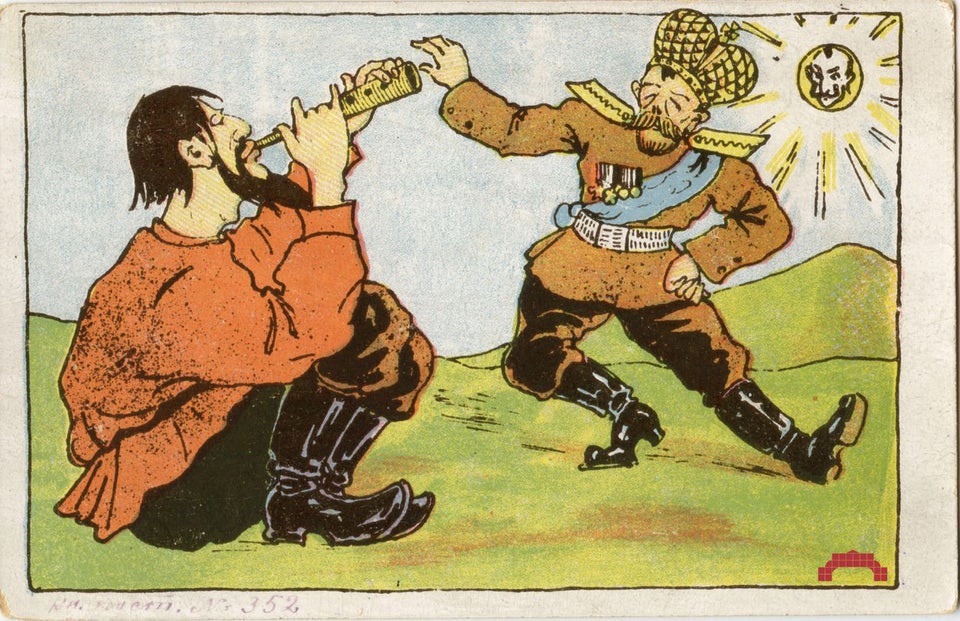Grigori Rasputin is most famous for puppeteering the Imperial Romanov family of Russia. He was essentially the nail in the coffin for a royal dynasty that spanned centuries.
What made him so alluring though? Why has he continued to be such a mythical figure over the past century? Here are 8 things you may not have known about Grigori Rasputin.
1. Rasputin may have been part of a underground religious cult called the Khlysty
The Khlysty were an extremist, anti-church group that had split from the Russian Orthodox Church long before Rasputin’s time. They encouraged the idea of committing “sin to drive out sin” and believed that doing so would bring them closer to God.
Whether he was actually a Khlyst or not, this is definitely one rumor that has endured over the years.
2. Rasputin was from Siberia
Siberia has a reputation for being the cold, remote wasteland of Russia. And it definitely lives up to that reputation. Russia used Siberia as a dumping ground for outlaws and criminals, creating a desolate community of peasants.
Rasputin was born to a peasant family living in a small Siberian village in 1869. His birthplace may have had strong role in shaping his personality and reputation later on in life.

3. He had “magical” abilities at a young age
Rasputin was gifted with mystical abilities from the very beginning. He was known in his village for having “divine visions” of the future and healing horses by touch. These abilities caused rumors to spread through his village that he had “the devil in him” and many feared him for it. His sudden glimpses of the future would eventually lead him to seek out the royal family in St. Petersburg.
4. He had a wife and kids
By the age of 30, Grigori Rasputin had a seemingly normal life. He was living in a village, married with four kids. Villagers knew him as a notorious drunken thief, who eventually fled to a monastery after getting caught stealing horses. This fateful visit is what sparked his transition from village drunkard to wandering holy man.
After he became a royal advisor to the Romanovs, Rasputin continued to provide and care for his wife and kids. His two daughters, Maria and Varvara, even came to live with him in St. Petersburg to go to school and become “little ladies”.

5. Rasputin was called “Uncle Grigori” by his home village
Rasputin’s home village of Pokrovskoye claimed that “Uncle Grigori” was a generous benefactor who handed out gingerbread to children. As recently as the 1990s, villagers spoke about him fondly to visitors. The last person that knew him in the village died in 1993, which means that many of the current residents have heard timeless anecdotes about the famous “Uncle Grigori”.
This isn’t a huge surprise, regardless of the suspicion that surrounded him in early years. The peasant class, especially those from his home village, eventually saw Rasputin as a saintlike figurehead. His murder was a slap in the face to those who saw him as a representative for the poorer class, especially the peasantry.
6. The Soviets tried to eradicate any lasting memories of Rasputin
The Soviets made sure to destroy his house and exile all surviving relatives, but that didn’t stop his infamous reputation from spreading across the world and history books. It’s been a little over a century since Rasputin’s death, and yet his memory is more prominent and legendary than ever before.

7. Rasputin’s healing powers may have been more medical than magical
The Imperial Family relied on Rasputin for his magical ability to heal Alexei, the Czar’s only son who suffered from hemophilia. The Tsarina was convinced that Rasputin was the only person in the world who could help soothe her son’s ailment. And there is some truth to this… However, it wasn’t necessarily his magical abilities that helped.
Rasputin notably insisted that the doctors stop giving Alexei aspirin, which is a known blood thinner and worsens hemophilia. Other theories include the practice of Siberian folk medicine and hypnotism. But it’s no surprise that people believed he had magical healing abilities, especially in a time and place that vehemently believed in mysticism and the supernatural.

8. Rasputin may not have been poisoned
The biggest legend and myth that surrounds Rasputin? His death. There are countless tales of Rasputin’s death… all spinning different stories of a man who was immortal and rose from the dead.
However, Rasputin’s own daughter, Maria, condemns at least one very famous part of these stories. Most accounts of his death, say that the assassinators laced Rasputin’s cakes and wine with cyanide. He ate all the cakes, drank the wine… and was completely fine. This fueled the rumor that he was immune to poison. Maria claims this part of the story is completely false because her father didn’t like sweets, and he would never eat a bunch of cakes.
The rest of his death story includes a messy array of events. From shooting him multiple times, to beating him up, to throwing him into a freezing river… Rasputin finally perished in December of 1916.





